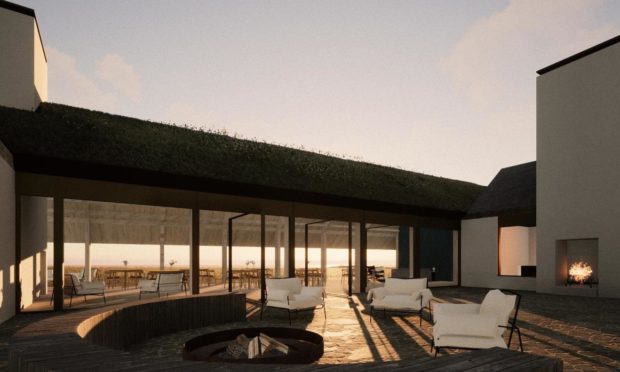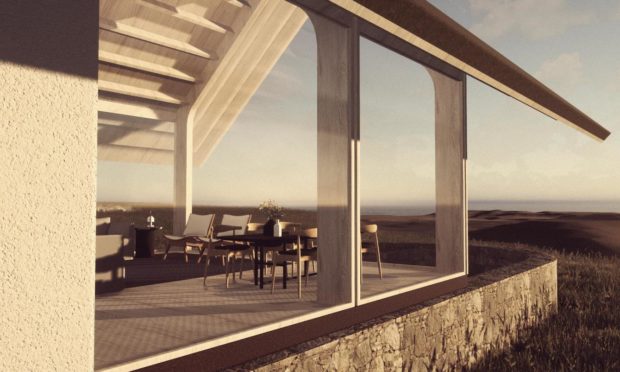A Highland landowner behind a £20 million eco hotel has submitted plans for the first phase of the development.
Edward Abel Smith has also revealed the first images of the Coul Links Hotel he wants to be “ambitiously authentic” to the area.
The initial application is for four lodges – each with four rooms – a reception, a dining area and guest facilities.
Mr Abel Smith’s ambition is to eventually have 80 rooms in 20 lodges.
He also aims to build affordable accommodation for workers, with the hotel projected to create more than 40 jobs.
Hotel dependent on controversial golf course going ahead
The development, announced in January, is dependent on a championship golf course being built at Coul Links in Sutherland.
The Scottish Government rejected plans for the golf course after a public inquiry.
But a local group, Communities for Coul (C4C), wants to revive the project. It has agreed a deal with Mr Abel Smith to lease land for a peppercorn rent.
Mr Abel Smith, who owns Coul Farm, has commissioned Embo-based architect Iain Levens to design the hotel.
He said: “The work Iain has done is testament to the local talent in East Sutherland.
“He is an absolute genius and has produced designs for what I think will be one of the most sought-after hotels in the world of links golf.
“His concept is to create comfortable but unspoilt accommodation for golfers, using the landscape and culture of the area as the main attraction.”
Mr Abel Smith has also launched the Coul Collective, to allow Highland businesses to sign up to be preferred suppliers to the hotel.
“I have been delighted by the response and hope businesses will continue to come forward,” he said.
Mr Levens said the hotel’s design began with research into the clachan and croft architecture of Sutherland and the far north.
He said: “This is a building type that predominantly exists in either a ruinous state or altered and extended beyond recognition.
Hotel will be ‘sustainable and ecologically sound’
“There are still examples of the traditional croft house that can be visited such as the museum at Laidhay.
“There is a particularly fine example of a ‘complete croft’ at the Grade A listed ‘Corr’ to the north of Latheron.
“The Corr is a fine example of how the collective buildings of the croft can form a distinct ‘sense of place’.”
Mr Abel Smith said he hopes to create a “sustainable, ecologically sound business”.
It includes ground-air source heat pumps, solar energy, rainwater harvesting and recycling, as well as electric shuttle vehicles for guests.
Other features include marram grass and wildflower machair gardens to attract birds and insects and bee hives in the grounds.
An aquaponics system will aim to produce all the food required on site and on Coul Farm.
A wildflower green roof will become a wildlife habitat and minimise the visual impact.
In addition to supporting C4C, the landowner backs the idea of building a bridge for walkers and cyclists across Loch Fleet.
The ambition to connect Littleferry and Coul Links, and possibly cycle path projects in the area, was recently discussed by Golspie Community Council.


